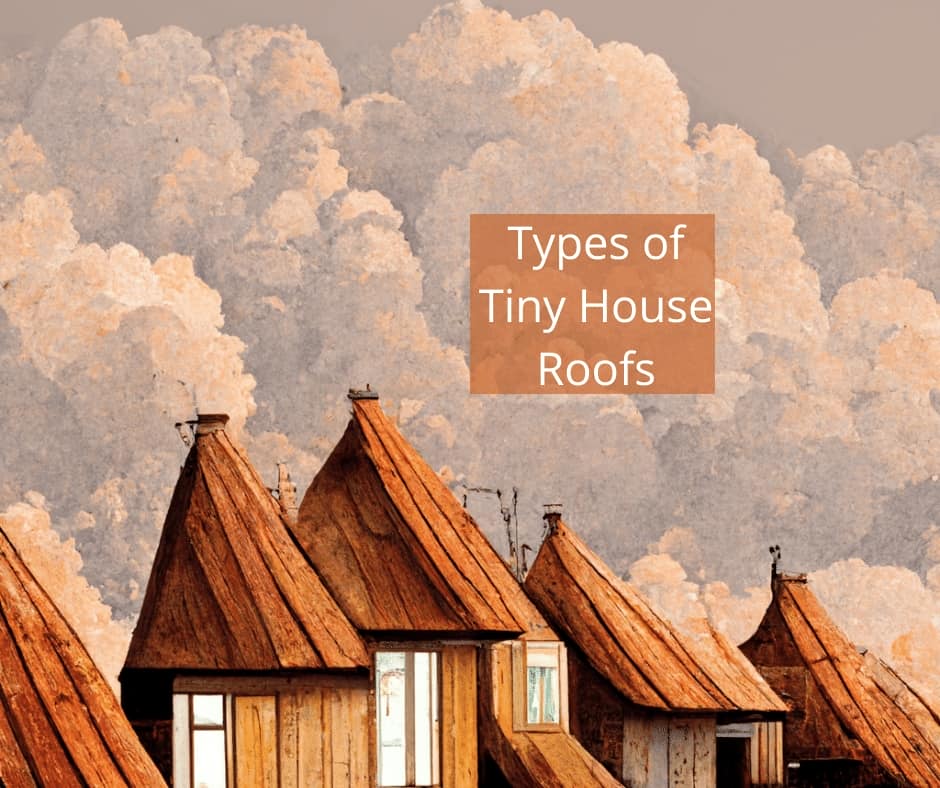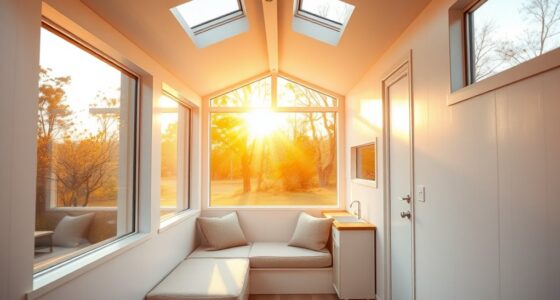Are you prepared to streamline your life and adopt a sustainable and minimalist lifestyle?
Join us on a journey to discover the practical benefits of tiny house living. With our allusion to the joys of downsizing, we’ll explore how living in a tiny house can help you reduce your environmental impact and achieve a more intentional way of life.
From finding the perfect spot to navigating building codes, we’ll provide you with the knowledge and practical tips you need to embark on this fulfilling journey.
Key Takeaways
- Tiny house living promotes sustainable design and minimizing waste.
- Downsizing creates space for what truly matters in life, prioritizing experiences and relationships.
- Financial benefits of tiny house living include reduced expenses and the ability to save money.
- Creative storage solutions and multi-functional furniture maximize space and functionality in a tiny house.
The Practical Benefits of Tiny House Living
We have found that one of the most practical benefits of tiny house living is in the ability to maximize limited space. Space optimization is essential when living in a small area, and tiny houses excel in providing clever solutions to make the most out of every square inch. From multi-functional furniture to creative storage solutions, every aspect of a tiny house is designed to serve a purpose and maximize functionality. This not only allows for a clutter-free and organized living space but also encourages a minimalist lifestyle.
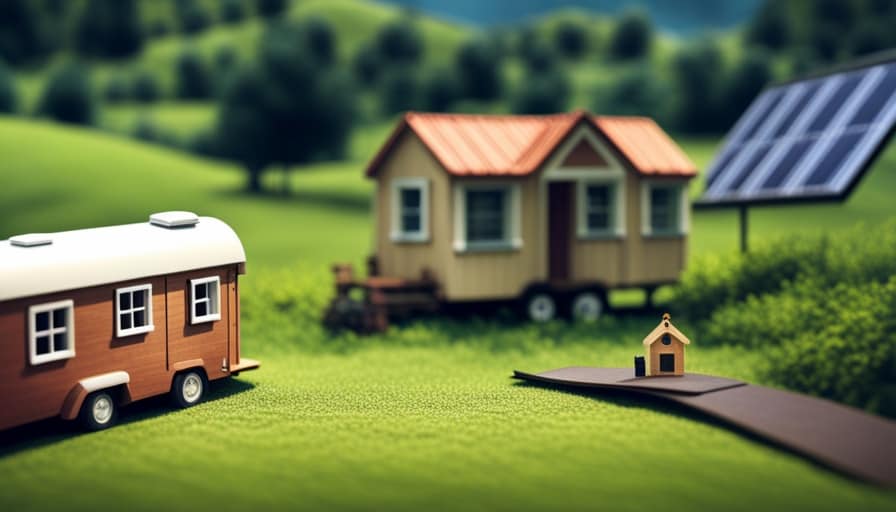
Another significant advantage of tiny house living is the financial freedom it offers. By reducing expenses such as mortgage payments, utility bills, and maintenance costs, living in a tiny house can save a substantial amount of money. This financial relief can allow individuals and families to allocate their resources towards more fulfilling experiences, such as travel, education, or pursuing their passions. In a world where material possessions often weigh us down, tiny house living can provide an opportunity to prioritize experiences over belongings and embrace a more sustainable and minimalist lifestyle.
The Process of Downsizing for a Minimalist Lifestyle
The process of downsizing for a minimalist lifestyle can be a transformative experience. By minimizing material possessions, we open ourselves up to a multitude of benefits that come with embracing minimalism.
When we let go of unnecessary belongings, we create space for what truly matters in our lives. This process allows us to prioritize experiences and relationships over material possessions, leading to a greater sense of fulfillment and contentment.
Moreover, downsizing helps us become more intentional with our consumption habits and reduces our impact on the environment. By choosing quality over quantity and focusing on what truly brings us joy, we can simplify our lives and reduce waste.

Ultimately, the process of downsizing for a minimalist lifestyle empowers us to live more intentionally and align our actions with our values.
Embracing Sustainable Living in a Tiny House
Living in a tiny house allows us to fully embrace sustainable living practices and reduce our ecological footprint. Sustainable design and minimizing waste are key principles in this lifestyle. By maximizing the use of space, tiny houses encourage us to be mindful of our consumption patterns and limit unnecessary material possessions. This not only reduces our impact on the environment but also promotes a minimalist mindset.
In a tiny house, every square inch counts. Furniture and storage solutions are often multifunctional, serving multiple purposes to maximize efficiency. Additionally, sustainable materials such as reclaimed wood, recycled materials, and energy-efficient appliances are commonly used in tiny house construction. These choices contribute to a more eco-friendly lifestyle.
To further illustrate the benefits of sustainable living in a tiny house, let’s look at the following table:
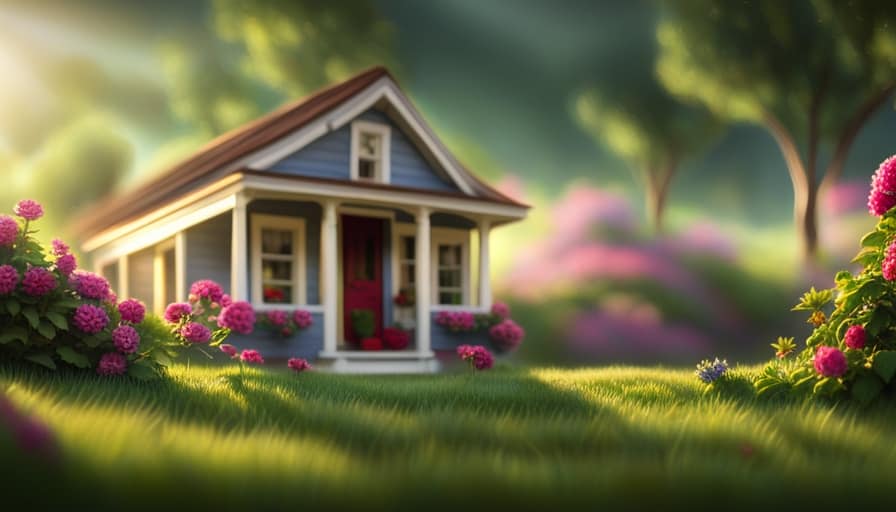
| Sustainable Design | Minimizing Waste |
|---|---|
| Use of renewable energy sources | Composting toilet |
| Rainwater harvesting system | Recycling and upcycling |
| Passive solar design | Minimal packaging |
| Efficient insulation and ventilation | Reduction of food waste |
| Use of low-flow fixtures | Avoidance of single-use plastics |
Embracing sustainable living in a tiny house not only allows us to live more consciously but also sets an example for others to follow. It is a practical and fulfilling way to contribute to a more sustainable future for ourselves and the planet.
Spot Selection: Finding the Perfect Location for Your Tiny House
Finding the ideal spot for our tiny house involves careful consideration of factors such as zoning regulations, access to amenities, and proximity to nature.
When it comes to off-grid living, maximizing self-sufficiency in a tiny house requires finding a location that allows for alternative energy sources, such as solar panels or wind turbines.
Additionally, being part of a tiny house community can provide a sense of belonging and support. Joining a tiny house village allows for shared resources, collaboration, and the opportunity to connect with like-minded individuals.
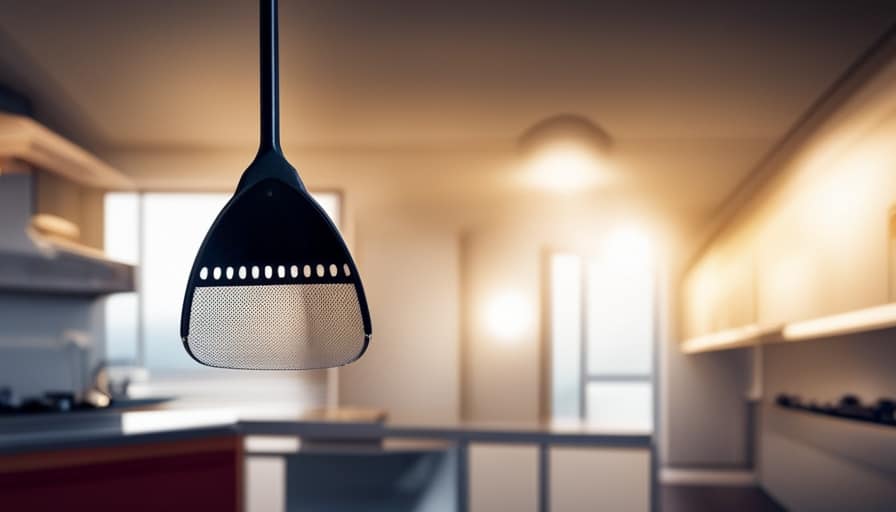
It’s important to research and visit different locations to ensure they align with our values and lifestyle goals. By selecting the perfect spot for our tiny house, we can create a sustainable and minimalist lifestyle that fosters self-sufficiency and community involvement.
In the next section, we’ll explore building codes and eco-friendly materials for tiny house construction.
Building Codes and Eco-Friendly Materials for Tiny House Construction
For our tiny house construction, we need to research and comply with building codes, as well as choose eco-friendly materials to ensure sustainability and minimize our environmental impact.
Building code regulations vary from one location to another, so it’s important to familiarize ourselves with the specific requirements in our area. These regulations typically cover aspects such as minimum square footage, ceiling heights, stair dimensions, and electrical and plumbing systems. By adhering to these codes, we can ensure the safety and structural integrity of our tiny house.

Additionally, opting for eco-friendly materials is crucial for an energy-efficient design. Materials such as reclaimed wood, recycled insulation, and low VOC paints can significantly reduce our carbon footprint while also promoting a healthier living environment.
It’s essential to prioritize sustainability and minimize our impact on the planet when constructing our tiny house.
Frequently Asked Questions
How Much Does It Cost to Build a Tiny House?
Building a tiny house can cost anywhere from $10,000 to $100,000, depending on factors like size, materials, and location. Financing options such as personal loans or RV loans can help make this sustainable and minimalist lifestyle more accessible.
What Are the Legal Requirements for Living in a Tiny House?
Legal requirements for living in a tiny house include navigating through various zoning regulations and complying with local building codes. It’s important to research and understand these restrictions to ensure a smooth and legal transition into tiny house living.

Can I Still Have a Comfortable Lifestyle in a Tiny House?
Yes, we can still have a comfortable lifestyle in a tiny house by focusing on home organization and maximizing space. With thoughtful design and efficient use of resources, we can create a cozy and functional living environment.
How Do I Handle Waste Management in a Tiny House?
When it comes to waste management in a tiny house, we’ve found that composting toilets and recycling solutions are key. These sustainable options allow us to minimize our environmental impact and live a more minimalist lifestyle.
What Are the Long-Term Maintenance Considerations for a Tiny House?
When considering long-term maintenance for a tiny house, it is important to prioritize sustainable design and energy efficiency. Regular inspections, proper insulation, and efficient systems will help ensure the longevity of the home while minimizing environmental impact.
Conclusion
In conclusion, living in a tiny house offers numerous benefits for those seeking a sustainable and minimalist lifestyle.
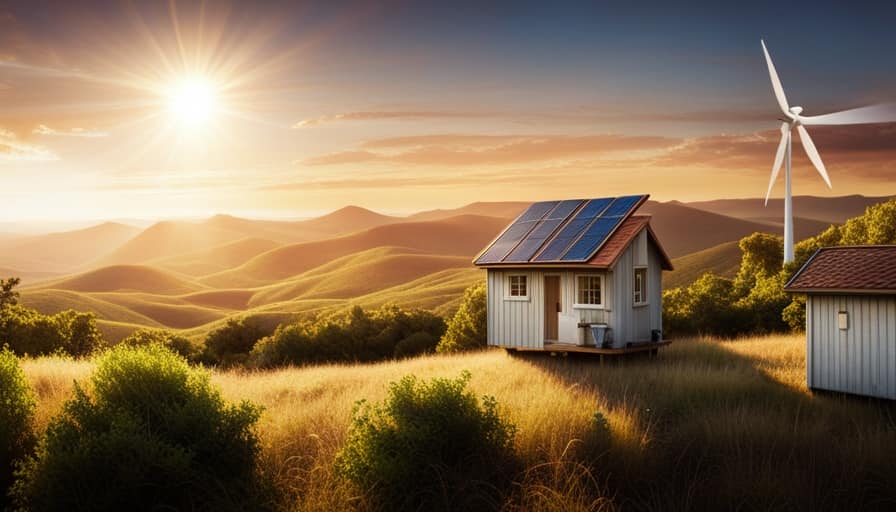
From the practical advantages of downsizing and simplifying our lives to the embrace of eco-friendly materials and sustainable living practices, tiny house living allows us to lead a more intentional and conscious way of life.
So, if you’re ready to embark on this exciting journey, start exploring the possibilities of tiny house living and experience the fulfillment of a more sustainable and minimalist lifestyle.
I’m Theodore, and I love tiny houses. In fact, I’m the author of Tiny House 43, a book about tiny houses that are also tree houses. I think they’re magical places where imaginations can run wild and adventures are just waiting to happen.
While tree houses are often associated with childhood, they can be the perfect adult retreat. They offer a cozy space to relax and unwind, surrounded by nature. And since they’re typically built on stilts or raised platforms, they offer stunning views that traditional homes simply can’t match.
If you’re looking for a unique and romantic getaway, a tree house tiny house might just be the perfect option.



